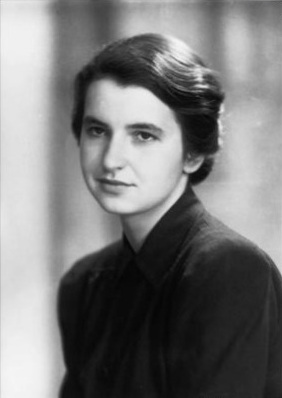

Here’s what you need to know about Rosalind Franklin: Her tombstone features an inscription that pays tribute to her remarkable accomplishments: “Her research and discoveries on viruses remain of lasting benefit to mankind.” She died on April 16, 1958, at the age of 37 from ovarian cancer, four years before the Nobel Prize was awarded. Yet, the Nobel Committee does not consider posthumous candidacies.

Some have suggested Franklin was a wronged heroine of DNA, and the time has come to reassess her legacy as a pioneering chemist and X-ray crystallographer. An accomplished scientist, Franklin made essential contributions to the structure of carbon, DNA, helical and spherical viruses, and research related to RNA and virus particles. She Never Stopped Innovatingįranklin’s scientific contributions didn’t stop at X-ray diffraction imagery. While James and Watson ultimately received scientific credit for the DNA structure discovery, Franklin’s work in X-ray crystallography led to the image capture, ultimately providing the information Watson and Crick needed to develop their structural model of DNA. This article led to their receipt of a Nobel in Physiology or Medicine in 1962. Watson and Crick used the photo and other research to publish a 1953 article on the chemical structure of DNA. Without Franklin’s knowledge or approval, Maurice Wilkins, Franklin’s colleague, shared Franklin’s photo 51 with James Watson and Francis Crick. She Was a Casualty of Historical Omissionĭespite her contributions, Franklin didn’t receive full credit for her role in the discovery. This exposed information about the three-dimensional structure of DNA. The picture, which used DNA that had been crystallized under moist conditions, revealed a fuzzy “X” in the molecule, indicating a helical structure. Known as photo 51, the X-ray diffraction image made history and can be seen in science textbooks to this day. On May 6, 1952, while working at King’s College London as a research associate, she successfully used X-ray crystallography to capture the double-helix structure of DNA, along with the genes inside it. She Put DNA Into Perspectiveįranklin was an English chemist and X-ray crystallographer. That’s because she provided the first captured image of a double helix that scientists used to unravel the secret to the structure of DNA. You see, if it weren’t for Franklin, human genetics might still be a mystery.

While few know her name, many in the science world are familiar with her discovery. We’re starting our tribute with Rosalind Franklin. Each of the next four weeks will focus on one of the four areas of STEM: Science, Technology, Engineering, and Math. As part of Women’s History Month, The Channel Company and Women of the Channel are celebrating exceptional women who have made outstanding contributions in STEM.


 0 kommentar(er)
0 kommentar(er)
